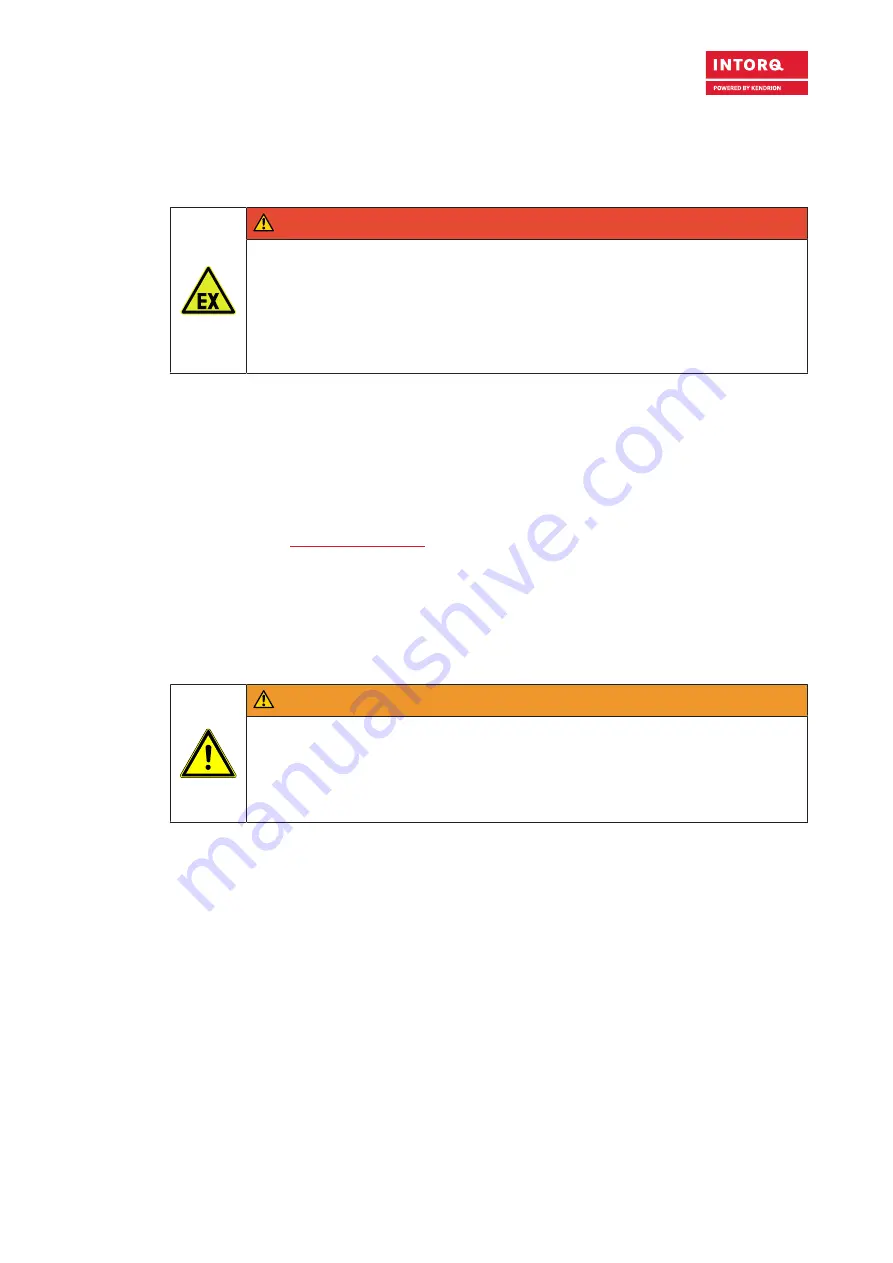
Maintenance and repair
Kendrion INTORQ | BA 14.0217 | 07/2021
69
9
Maintenance and repair
DANGER
Danger of explosion
Increased temperatures on the surfaces and in the friction gap can result when the maxi-
mum friction work and operating frequencies specified by Kendrion INTORQ are ex-
ceeded. These can lead to ignition.
¾
Operation is only permitted within the specified specifications.
The following must always be observed when installing or repairing ATEX brakes:
¾
All work related to the dismantling of the brake must be carried out with non-sparking tools.
¾
If spark-generating tools are used for further work, then such work on the brake must always be per-
formed outside the explosive atmosphere.
¾
For every servicing or repair that is carried out, the brake must be cleaned in accordance with the in-
structions in the Maintenance, Page 71 section, and the entire brake must be cleared of impurities
caused by the explosive dust atmosphere.
¾
In order to eliminate the risk of ignition and injury, the spring-applied brakes may only be dismantled af-
ter they cool down.
9.1
Wear of spring-applied brakes
WARNING
Braking torque reduction
The system must
not
be allowed to continue operations after the maximum air gap s
Lmax
has been exceeded. Exceeding the maximum air gap can cause a major reduction in the
braking torque!
The table below shows the different causes of wear and their impact on the components of the spring-ap-
plied brake. The influencing factors must be quantified in order to calculate the service life and prescribed
maintenance intervals of the rotor and brake accurately. The most important factors in this context are the
applied friction work, the initial speed of rotation before braking and the operating frequency. If several of
the causes of friction lining wear occur in an application at the same time, the effects should be added to-
gether when the amount of wear is calculated.



























